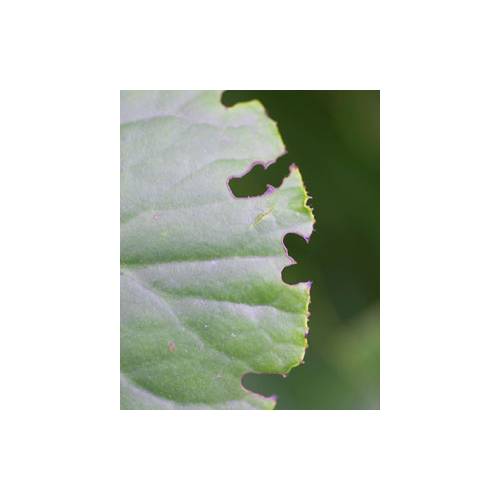
Plant Bugs
Vine weevil
- Details
-
It has a strange name and you have probably never seen this insect. However you will have cursed it: it is the one that makes all those holes along the edge of your plant's leaves!
The symptoms
The leaves are eaten along the edges like a series of notches one after the other as if they had been made with a hole punch. This symptom is found on tough leaved plants (evergreen shrubs, vivacious flowers with thick leaves). Plants that grow in hot and dry conditions are more likely to be attacked. Pot plants are not spared either.
Lifecycle
The vine weevil is a member of the weevil family. Its larvae develop in the soil over a period of two years, during which time they eat the roots of plants. On leaving this underground phase the larvae transform into adults, which remain hidden in the soil during the day and only come out at night to munch away on the edges of leaves. It is because of this that we do not see them often. Although an attack of vine weevil can be spectacular, it does not threaten the life of a plant. It is only has an aesthetic effect, despite the fact that the larvae do weaken the plant by attacking its roots.
How to fight it
The fight against the vine weevil is tricky because of its long development cycle. When you notice leaves that have been nibbled round the edges, you can be certain that there are larvae present in the soil. Therefore you must not only struggle against the adult insects that cause the damage but also against the larvae which are weakening the plants and will in two years' time emerge as adult insects. The most efficient way of combatting the pests is to use a nematode (microscopic worms called Steinernema) based treatment, which destroys the larvae in the ground. This treatment must be carried out for at least two consecutive years. To be effective the application of the nematodes must follow very strict rules (soil humidity, outside temperature…). The chance of relapse is high.
How to avoid it
The vine weevil is an insect originating from the Mediterranean, which favours sunny positions and dry ground. That is the reason that often the damage is observed near the house where the plants are sheltered from the rain by the roof. It is the same for pots and on the terrace: the conditions there are very favourable for the vine weevil. You can discourage the development of the insect by changing the type of plants grown (using more ground covering plants for example) so that the soil receives less sun. Likewise increasing the frequency of watering (if the plants will tolerate it) also discourages the presence of the vine weevil.
Good to know
It is actually mush easier to combat the vine weevil that has infested a potted plant. Simply soak the pot in water overnight so that all the adults and larvae hiding in the soil are drowned. - Photos (1)

